Various species of oysters (Crassostrea nippona, C. echinata,
Ostrea denselamellosa and O. revularis) are found along the coast
of South Korea, however only the Pacific oyster (Crassostrea
gigas) is of commercial importance.
Culture activities on the Pacific oyster are concentrated and
highly developed in the Southern Coast Provinces followed, in
terms of production output, by the Western coast Provinces. No
large commercial scale oyster culture has yet developed on the
East coast of the Peninsula. Among the Southern Provinces,
Kyongnam's yearly output amounts to about 85% of the total
country production, with on-growing sites concentrated around
Chungmu area. On the Western coast the major producing province
is Kyonggi (Table 6 and Fig. 10).
The culture of the Pacific oyster has developed rapidly since
1969 with the introduction of the hanging method. As a result,
production in 1986 was 268,775 MT compared to 26,814 MT in 1969.
Oyster production figures from 1980 to 1986 are shown in Figure
11. The annual average growth rate for this period was about 20
%. The total 1986 production of the commercially important
bivalve species (oysters, mussels, little-neck clams,
cockles, scallop and ark shells) amounted to 447,749 MT, of which
over 60 % were oysters.
Spawning of the Pacific oyster in ROK occurs naturally with two distinct spawning seasons. The major season occurs between May and June, with the later one being between August and September. Spatfall forecasting is strongly practised in order to pinpoint the most suitable time for laying out the spat collectors (scallop and/or oyster shells are commonly used as cultch), as well as to detect areas where settling will be abundant. For the forecasting of seed collection two sets of investigations are practised in parallel: 1) environmental investigation and 2) larval investigation. In the former, a number of environmental parameters are collected which comprise water temperature, salinity, current direction and velocity, wind direction and rainfall. In the latter, horizontal and vertical plankton samples are collected for determining the presence, abundance and stage of development of oyster larvae.
Two methods of seed collection are practiced in ROK, rack and hanging.
Rack method. Bamboo poles 1.5 m in length are driven into the sea bed forming long rows roughly horizontal to the coast line. Starting from the intertidal zone several of these rows are fixed in a parallel formation and go as far as a man can wade, often using longer poles. Longer bamboo poles are then fastened vertically on the upper section of the row so as to strengthen the structure. Usually two to four such rows are connected to one another by poles branching off laterally. These structures collect spat efficiently. However, one major handicap is that the structures need to be rebuilt every year as the wood deteriorates rapidly, especially in the intertidal zone.
Hanging method. Spats are collected on scallop or oyster shell cultch suspended from a raft. The raft framework is commonly constructed using bamboo poles 10–15 cm in diameter, while styrofoam blocks encased in polyethylene bags are used as buoys. Spat collected during the ascending period of water temperature (i.e. in early summer) are either transferred directly to the on-growing sites or left at the collecting site until the end of September. Towards the end of summer the spat will have grown to an average size of about 10 mm. However, before they are transferred to the on-growing sites they undergo an intermediate growth phase known as the “hardening stage”. In other words, spat collectors are transferred to nursery grounds where they are fixed on trays. During the hardening period, which usually lasts through several months, spats are exposed daily to the atmosphere for roughly 5 hours. Such practice is widely adopted because hardened spats show lower mortality than spats directly transferred to the on-growing sites. On the other hand, spats which are collected during the descending period of water temperature (i.e. in late summer) are transferred to the nursery grounds for hardening.
Different oyster culture systems are practiced in ROK. These are the following: 1) bottom sowing culture, 2) stake culture, and 3) hanging culture.
Bottom sowing culture. This method is the simplest and no infrastructure is involved. In order to qualify for this kind of culture, an area basically requires to have a hard sea bottom. Muddy areas are usually undesirable due to the fact that the shells are easily covered with sediments which would be responsible for high mortalities. In South Korea this method is widely practised in intertidal zones.
Stake culture. This method basically consists of culturing oysters which have settled on wooden poles used for the collection of the spat. This method is also practised in intertidal zones.
Hanging culture. Four methods of hanging culture can be identified. These are: 1) Raft method, 2) Long-line method, 3) Rack method, and 4) Umbrella-type method.
Raft method. The rafts are constructed using wooden poles 10–15 m long. These are placed parallel to one another at about 0.5 m apart and fastened to lateral beams. The floats for the rafts are usually made from polyethylene. Often, 8– 12 floats are used, the number required being determined by the weight of the hanging culture.
Long-line method. The long line method is a modification of the raft system, and is more suitable for offshore culture. The basic structure consists of a series of polyethylene floats arranged in a row, connected to one another by two parallel polyethylene ropes (2 cm in diameter) 60 cm apart depending on the width of the floats. A typical long-line is usually 70–75 m long and secured at each end with two anchors. A series of strings of oysters (rens) are hung from each of the parallel ropes. These rens are usually 7.5 m long, although this length may vary depending on the depth of the water column (Fig. 12 and Plates 1, 2 and 3).
Rack method. This method is a shallow water adaptation of the hanging culture system. Racks are usually constructed with wooden poles driven into the sea bottom 2–4 m apart. These uprights are then fixed together by horizontal poles which will then be responsible for supporting the rens. The rens are placed about 30 m apart.
Umbrella-type method. This method is a modification of the rack system. It consists of a strong wooden pole from which a series of strings of oysters spread outward similar to an open umbrella.
No major problem currently affects the oyster culture in ROK, however due to the importance of the export market (mainly the United States), particular attention is given to the quality of the environment.
The research activities planned for developing further the oyster industry in ROK concerns mainly the improvement of the existing culture techniques.
| SPECIES | PROVINCE | LOCALITY | NOTES |
| Crassostrea qiqas | Pusan | -- | Natural oyster beds and fisheries. Developed culture activities. |
| Kyongnam | Chungmu | Natural oyster beds and fisheries. Developed culture activities and highest producing province. | |
| Chonnam | -- | Natural oyster beds and fisheries. Developed culture activities and second highest producing province. | |
| Chonbuk | -- | Natural oyster beds and fisheries. Some culture activities. | |
| Chungnam | -- | Natural oyster beds and fisheries. Developed culture activities and second highest producing province on the western coast. | |
| Kyonggi | -- | Natural oyster beds and fisheries. Developed culture activities and highest producing province on the western coast. |

Figure 10: Major oyster (Crassostrea gigas) culture areas in ROK.
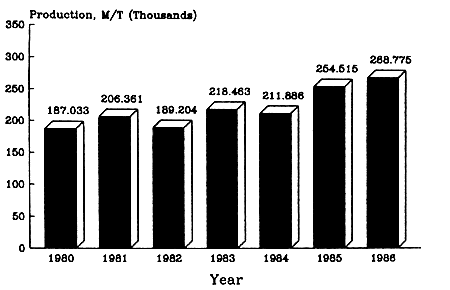
Figure 11: Oyster (Crassostrea gigas) production data in ROK from 1980 to 1986.
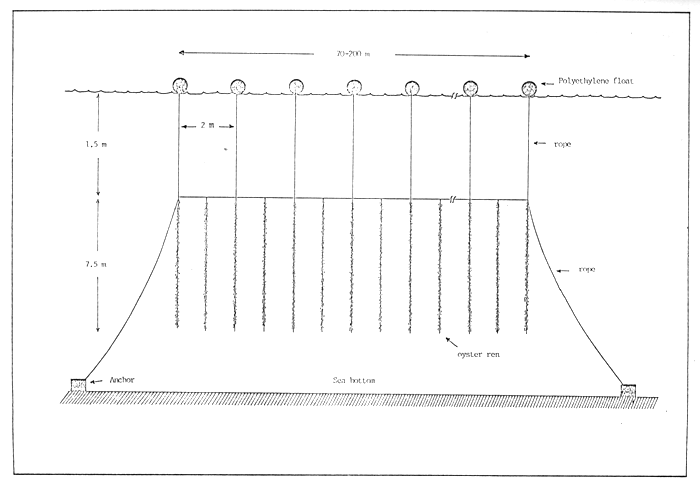
Figure 12: Oyster long-line culture system as practised in ROK.
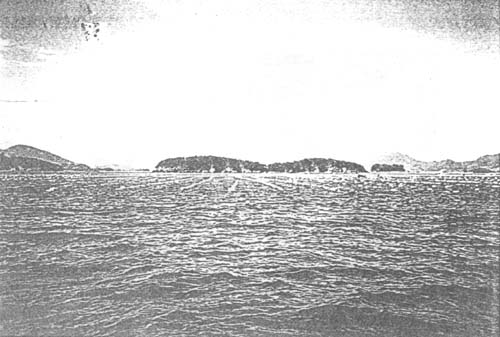
Plate 1: Oyster hanging culture site in Chungmu, Republic of Korea.
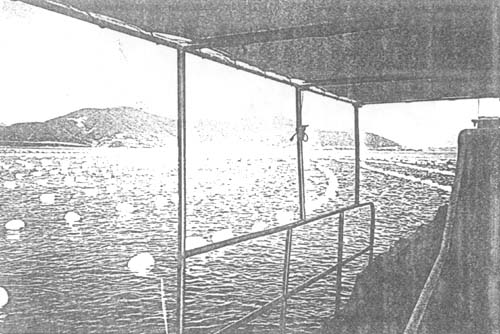
Plate 2: Long-line oyster culture, Chungmu, Republic of Korea.
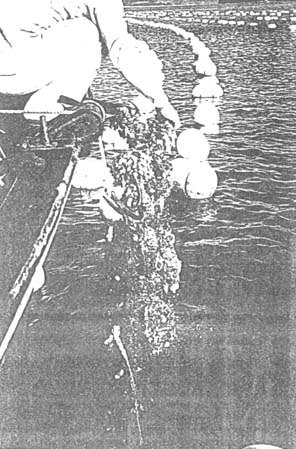
Plate 3: Harvesting of oysters cultured by the long-line method.